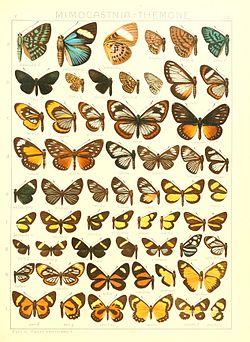| Ithomeis | |
|---|---|
 | |
| Several subspecies of the geographically variable Ithomeis aurantiaca in Die Gross-Schmetterlinge der Erde | |
| Scientific classification | |
| Kingdom: | Animalia |
| Phylum: | Arthropoda |
| Class: | Insecta |
| Order: | Lepidoptera |
| Family: | Riodinidae |
| Subfamily: | Riodininae |
| Genus: | Ithomeis Bates, 1862 |
| Synonyms | |
| |
Ithomeis is a genus in the butterfly family Riodinidae present only in the Neotropical realm.